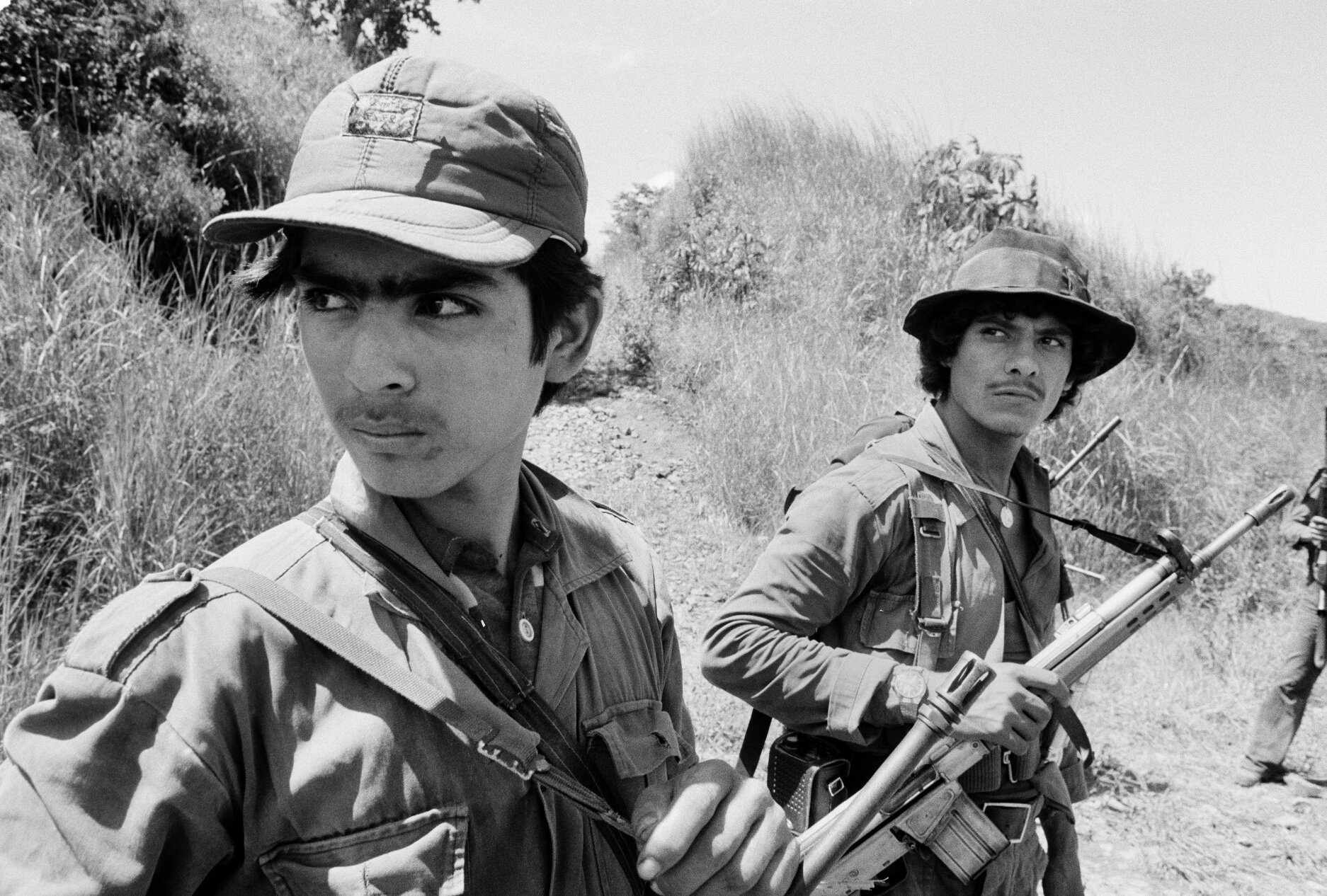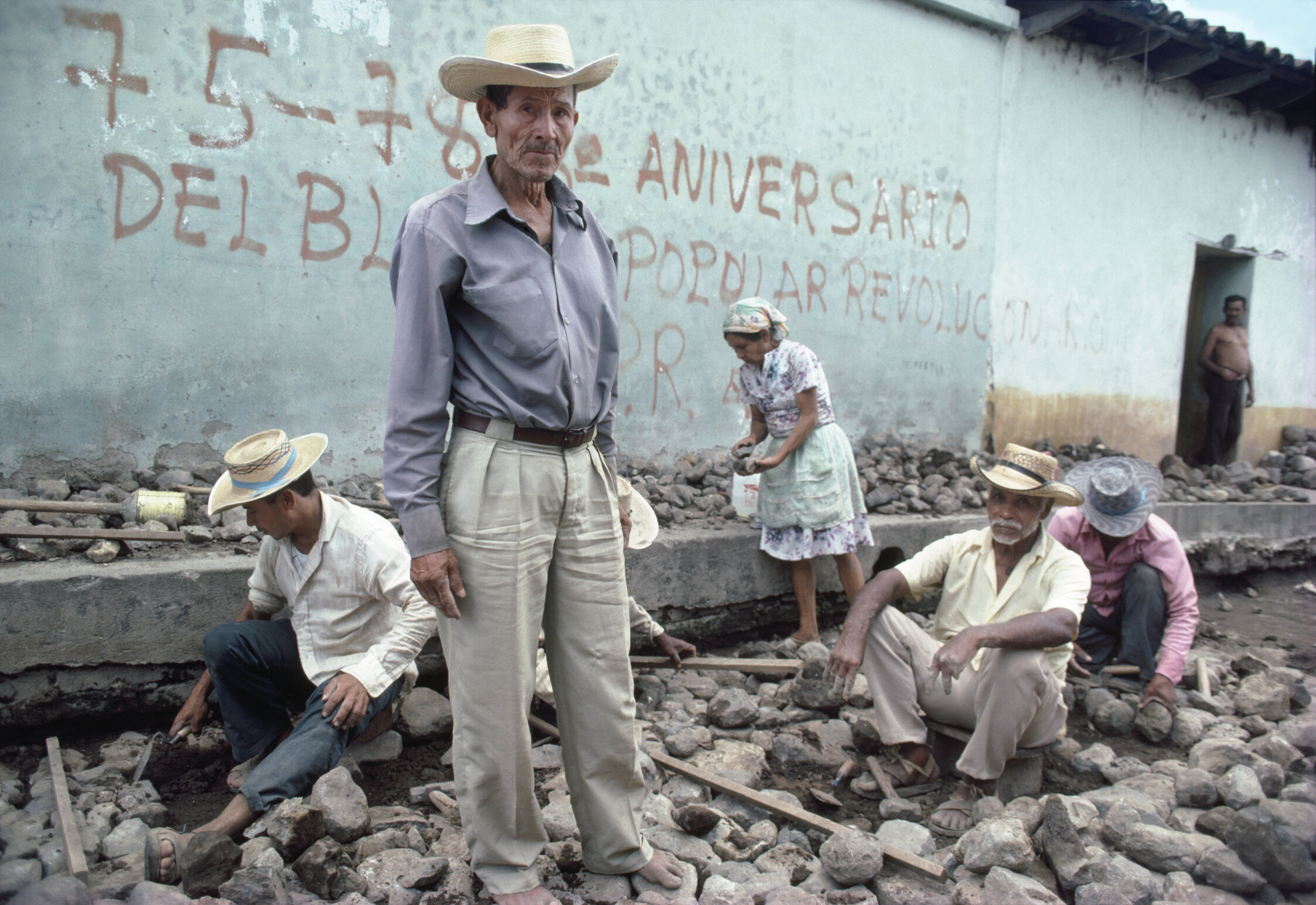El Salvador: State of Exemption
I arrived in El Salvador as a Time magazine photojournalist in 1981, about a year into the country’s armed conflict. I photographed guerrilla insurgency movements in the countryside and counterinsurgency efforts by the Salvadoran military and their United States advisors. I stayed through the end of 1984 and observed daily life amidst the brutality of organized death squads and state-sanctioned violence against social, labor, and clerical movements.
Land reform disputes between the ruling oligarchy and landless Salvadoran laborers led to a peasant uprising in 1932, known as La Matanza for its brutal repression by the state. Violence continued until civil war broke out in 1980. U.S. diplomacy in El Salvador was influenced by Cold War concerns of Soviet and Cuban support for left-wing movements throughout Central and South America. U.S. officials in El Salvador promoted the failed counterinsurgency strategies previously employed by U.S. military advisors in the Vietnam War. From 1980 to 1992, the United States sent over $6 billion in economic and military aid to El Salvador, despite ample evidence at the time of the Salvadoran state regime’s severe human rights violations and political corruption.
The root causes of the civil war were not resolved after the 1992 peace accords. High levels of poverty and income inequality remain due to a feudal economic structure, a dependency on foreign capital, and large-scale displacement of civilians from the civil war. Many Salvadorans sought refuge in the United States. The Salvadoran government’s failure to address judicial and social reform contributes to the ongoing migration of Salvadorans.

